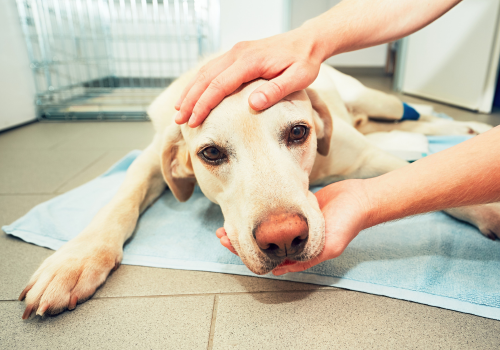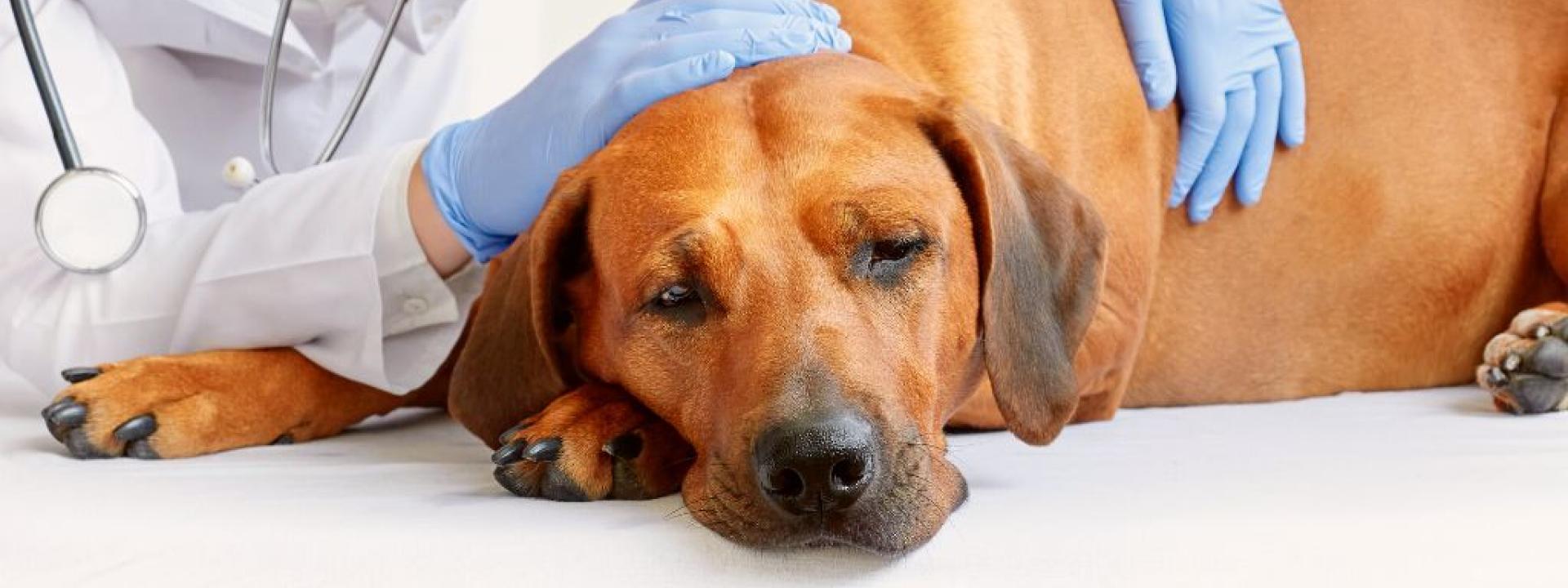Unfortunately, canine cancer is quite common, so if your dog has been diagnosed or you suspect they may have cancer, you’ve likely turned to the internet for more information. We’re glad you found us! At Veterinary Medical Center, we work extremely hard to bring you the accurate information you need, especially regarding something as serious as canine cancer. The mention of cancer or a tumor could cause the most sensible person to panic, we are here to help answer some questions you have and hopefully calm your nerves.
If you’re looking for a highly trained veterinarian in Union City, CA, we’d love to see your dog for the diagnosis and/or treatment of cancer, so please call us at (510) 441-8500.
Is cancer in dogs common?
It's pervasive. It's probably one of our most frequently diagnosed diseases. We tend to see a fair amount in dogs as they age and sometimes in younger dogs. But for the most part, we see cancer in dogs after about the age of nine.
What are the common types of cancer in dogs?
There's hemangiosarcoma, a cancer of your spleen and liver.
We see hemangiosarcoma in some breeds more than others, such as:
- German Shepherds
- Golden Retrievers
- Labrador Retrievers
Any dog can present with this kind of cancer, but a few breeds tend to be overrepresented.

There are also many skin-type cancers. Mast cell tumors are a prevalent issue that we see. This skin cancer tends to be solitary, but there can be multiple nodules in the skin. And on occasion, it can be quite aggressive, so catching it early is essential. We see melanomas on the skin and in the mouth.
We also see various tumors, including squamous cell carcinomas, tumors of the skin and the mouth. Male dogs get testicular tumors, and mammary tumors are prevalent in female dogs that have been spayed later in life. Osteosarcoma is a very aggressive malignancy of the bones.
Lymphoma is widespread, and that’s a cancer of the lymph system or the lymph nodes, part of the immune system, just as in humans. We also see bladder tumors, so the types of cancers we see in dogs run the gamut.
What are some signs and symptoms of cancer in dogs?
Sometimes, you can see weight loss and lack of appetite in dogs that could indicate cancer. Dogs can also get many lumps and bumps. Most of them are benign, but we don’t know for sure without checking them and running a straightforward test called a fine needle aspirate.
But just as people often have no idea that they have a tumor growing inside them, dogs are no different. Many don't have any symptoms, making your dog’s annual exams so critical. When we palpate your dog or feel your dog's abdomen as part of the exam, we'll often find a large spleen or a tumor. We sometimes find things during rectal exams as well. And again, we’ll test those lumps and bumps to ensure they’re benign.
We palpate the lymph nodes when we do exams. We feel the lymph nodes for signs of enlargement. We sometimes find cancers in the mouth and the extremities, or even in the eye.
Unfortunately, the weight loss and breathing difficulty you might ultimately see in your dog are symptoms that often appear when the cancer is already advanced. Annual exams are essential, but you should also be looking for anything out of the ordinary. Bring them in if you see lumps or something else you haven’t seen on your dog before.
How is early detection and diagnosis of cancer in dogs so important?
Most cancers are more amenable to being removed, like tumors. And if they're detected earlier, when the tumors are smaller, they’re less apt to have spread, and the prognosis is often much better. In these cases, you can treat them with surgery or chemotherapy, depending on the tumor type. Cure rates are affected by how soon we catch the cancer and not having it spread.
Image - Float

What are some ways a veterinarian would diagnose cancer in a dog?
Diagnosing cancer in your dog involves a combination of you telling us the history, perhaps finding a bump at home, or us finding things during an exam. As dogs age, we may want to take chest films as a survey to have a look, just like we do for humans sometimes. Sometimes we'll do pre-anesthetic exams and see something in the lab work. Blood work generally does not diagnose cancer, but it may tell us if something’s abnormal. If the white blood cell count is very high or the red blood cell count is very low, we want to look into that, and then we may find cancer. X-rays and abdominal ultrasounds are also vital, and we sometimes do chest ultrasounds.
We perform a lot of biopsies of lumps, needle biopsies, and punch biopsies of lumps that we find on your dog's body to ensure that they're benign. And if they're not, we will want to remove those. A fine needle aspirate is where we stick a needle in a solitary tumor, for instance, or multiple tumors that we can see and feel. And then, we take that sample, put it on a slide, and look at it under the microscope. Sometimes that in and of itself is diagnostic.
Sometimes, we sedate the pet, take a little piece of the lump or bump, send it to the laboratory, and do histopathology on it. They analyze it and give us a diagnosis of what it is and sometimes how aggressive it is. In some cases, we remove the whole tumor and do histopathology. They can let us know whether it had reasonable margins, whether we got it all, and its recurrence rate. When there’s an indication that that dog has metastatic disease, we start looking for a primary tumor elsewhere.
What treatment options are available for dogs with cancer?
We have nearly every treatment that humans have available for cancer for dogs, so surgical is undoubtedly an option and chemotherapies. It depends on the prognosis and how much you're willing or can spend, as every case is different. As just about any veterinarian will tell you, when dogs are in rough shape, we’re typically not going to recommend that they go any further with treatment because it’s not likely to do the dog any favors. But we do have many excellent treatments that can prolong a high quality of life for your dog. We can completely cure mast cell cancers if we catch them early, so we must get as much information from you as possible so we can be your partner as you go through that with your dog.
What are some possible side effects caused by cancer treatment?
Just as in humans, radiation therapies and chemotherapies can cause side effects in dogs but also, just as with humans, these reactions depend on the dog. Dogs tend to tolerate chemo better than humans, and we have many medications for nausea these days. But still, some dogs can have side effects, so it's just dependent on the pet.
The AAHA has a comprehensive guide you can review to figure out if your dog may be at risk for cancer. If your dog has been diagnosed with cancer, you’re probably wondering what you need to know as their faithful owner, but don’t let that overwhelm you—your veterinary team is there to guide you every step.
If you have further questions about dog cancer, reach out to your veterinarian. If you live in or near Union City, CA, we’d love to see your dog, confirm the diagnosis, and ensure the best possible treatment plan, so please don’t hesitate to call us at [practice: phone] or email us at [practice: email].

